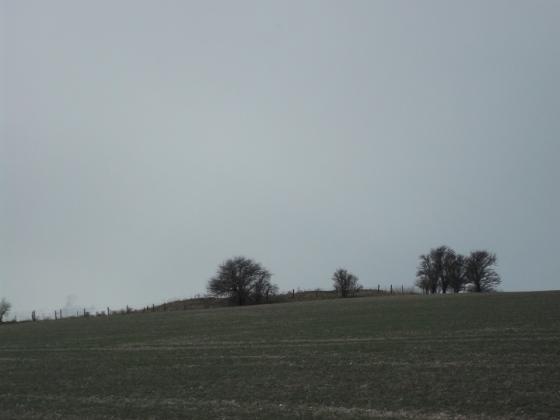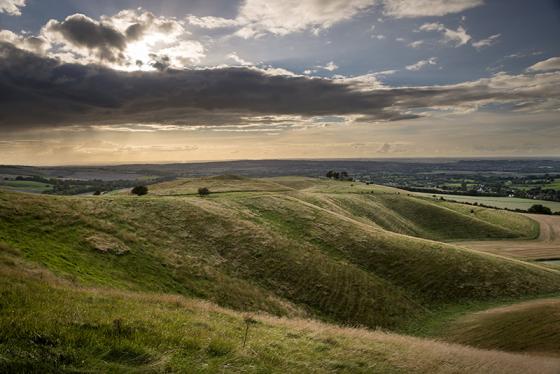Details of Barrow on Pastscape
Monument No. 1461996 – Alton 15
A Bronze Age bell barrow, part of a barrow group, situated to the southwest of Knap Cottage on Walkers Hill. The barrow was designated as Alton 15 by Grinsell (1957) and is visible as an earthwork 24 metres in diameter, 2 metres high and comprises a central mound 9 metres wide, situated on top of a wider flatter mound. No traces of the barrow ditch survive. The barrow is connected to the other bell barrow (Monument HOB UID 1461989) by a Medieval pillow mound (Monument HOB UID 1461987).
Details of Barrow on Pastscape
Monument No. 1461989 – Alton 16
A Bronze Age bell barrow, part of a barrow group, situated to the southwest of Knap Cottage on Walkers Hill. The barrow was designated as Alton 16 by Grinsell (1957) and visible as an earthwork 24 metres in diameter and 2 metres high. No traces of the barrow ditch are visible. It is is the most northern of the barrow group and is connected to another bell barrow (Monument HOB UID 1461996) by a Medieval pillow mound (Monument HOB UID 1461987).
Details of Barrow on Pastscape
Monument No. 221097 – Alton 6
A Bronze Age bowl barrow, part of a barrow group southwest of Knap Cottage on Walkers Hill. The barrow was designated as Alton 6 by Grinsell (1957) is situated to the southwest of the group and survives as an earthwork 16 metres in diameter and 0.5 metres high. No traces of the barrow ditch survive. Excavations by J. Thurnham during the 1850s recorded a previously disturbed cremation and an extended female inhumation which he interpreted as intrusive, presumably early medieval.















































































































































































